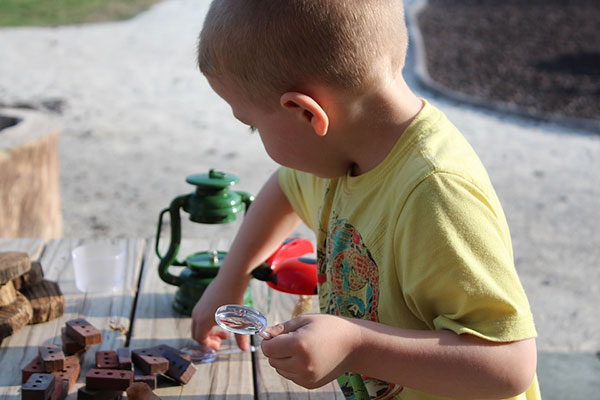 Chalk-n-talk and one-way conversation is still the dominant pedagogy in India’s classrooms. Why is it that none of the other faculties are brought in to play in the classroom? How many of the senses are aroused to aid students understanding of the lesson being presented? Invariably some set pedagogy is imposed on students. Can teachers not guide learners to ‘discover’ the pedagogy most agreeable to them to make learning a truly exhilarating process?
Chalk-n-talk and one-way conversation is still the dominant pedagogy in India’s classrooms. Why is it that none of the other faculties are brought in to play in the classroom? How many of the senses are aroused to aid students understanding of the lesson being presented? Invariably some set pedagogy is imposed on students. Can teachers not guide learners to ‘discover’ the pedagogy most agreeable to them to make learning a truly exhilarating process?
The rapid action that teachers force in classrooms, which leaves students gasping, can be understood from an example. When children are asked to explain the architecture of a personal computer or cell phone, they zip through the steps leaving adults/teachers dumbfounded. They become impatient watching us grope for the right commands, which are so easy for them to manipulate.In such situations, adults tend to plead for time to complete the task themselves, so they may learn to get it right for future use and be spared the embarrassment of asking for help repeatedly. Likewise students also need to be given opportunities to learn in their own ways — something that doesn’t happen in our schools.
Therefore instead of making students feel helpless and confused as we teach them in conventional and teacher-centric ways, is it not incumbent on us to allow those ‘aha’ moments to happen to students in classrooms? So what can we do to make a lesson echo with the sense of student achievement? How can we make them experience the joy of discovery, so they are curious and eager to learn?
Let’s take the case of an adult learning to use a personal computer for the first time. There are many conditions that need to be fulfilled for meaningful learning to occur. Among them:
• The learner must interact with the machine herself — the computer must be available to her to try out the commands
• The learning environment or process should be non threatening/accepting without disparaging comments
• Demonstration is essential
• Guidance needs to be provided on demand
• Sufficient time for mastery must be given — one cannot learn if computer time or access is limited
• Personal preferences need to be accommodated. Some learners may prefer to use the keyboard and others may prefer to use the mouse
• Visual feedback to enable the learner to test herself on the screen of the computer, and sound cues — all of them reinforce the learning process
And this is exactly the process on which ‘discovery’ learning pedagogy is based.
Jerome Bruner is widely regarded as the father of constructivism. He believes students learn concepts best through discovery — by using their existing knowledge to learn how things work. “To promote concept discovery, the teacher presents a set of instances that will best help learners to develop an appropriate model of the concept,” he says.
According to Bruner, there are three stages in the development of a concept.
Enactive stage
In the enactive stage, knowledge is stored primarily in the form of motor responses. Individuals initially learn through motor skills. They learn by experimenting with and learning to manipulate objects. For example, imagine someone trying to teach a child to play ball by describing the motor actions involved verbally.
Iconic stage
In the iconic stage, on the assumption that knowledge is stored primarily in the form of visual images, the discovery learning method encourages using visual aids to supplement teaching material. Examples include images, videos, charts and graphs. To draw upon the computer learning example, once a learner uses a PC for some hours, he can then turn to the manual to further his knowledge and processes of the machine.
Symbolic stage
Finally in the symbolic stage, the discovery learning pedagogy proceeds on the assumption that knowledge is stored primarily as words, mathematical symbols, or in other symbol systems. This stage is akin to an adult learner using the computer for some hours, and acquiring greater understanding of its processes and capabilities through extensive reading of the manual and receiving commands verbally or by phone. At this stage the learner can follow the oral commands and/or instructions and add to her learning repertoire.
In the Indian context, although many students are able to follow chalk-n-talk pedagogies, the teacher is making an assumption that the students have well-developed symbolic learning capabilities. But without preparing and taking learners through the enactive and iconic stages, there is a strong possibility that students will not have sufficient background information to be able to fully understand the concepts being taught. (For further information read Jerome Bruners The Process of Education, Harvard University Press, 1994).
(Mala Ramadorai is a well-known educationist and former vice-principal of Bombay International School)



























